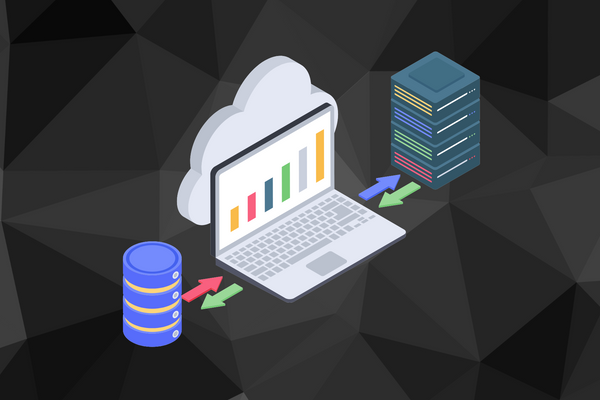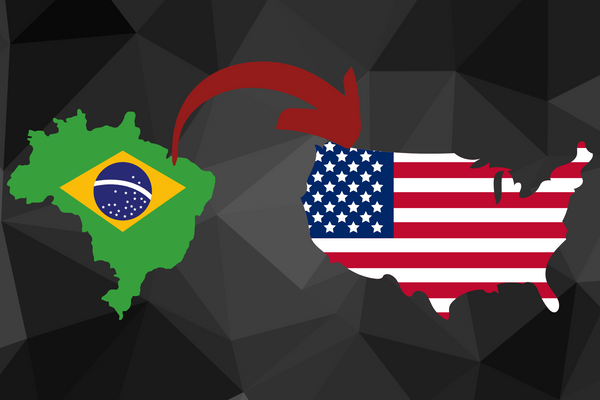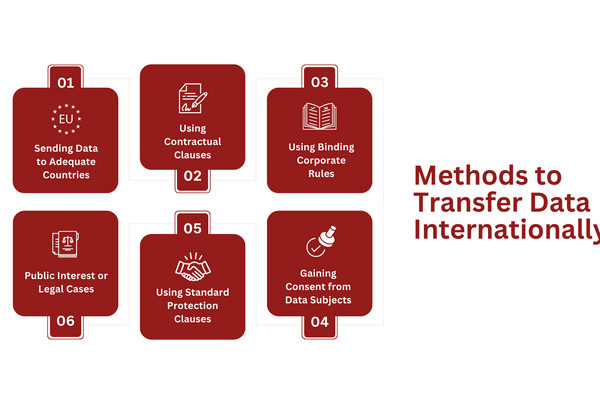
You may have heard the term LGPD data transfer thrown around here and there. But what exactly does it mean for businesses? This article aims to simplify complex topics for you.
We’ll delve into the intricacies of LGPD, Brazil’s data protection law, its requirements for data transfer, and best practices that your business can follow. By the end, you’ll have a good grasp of how to align your business with LGPD compliance and why that’s important for both businesses and data subjects.
Now that you know what to expect, let’s get into the details.
Key Takeaways
LGPD data transfer rules are important for businesses to follow, and not doing so can lead to hefty fines or even criminal charges.
LGPD and GDPR have some similarities but are not the same; knowing the specific rules for each is crucial for international data transfers.
Compliance is more than just a legal requirement. It’s about building trust with your customers and safeguarding your business’s reputation.
What is a Data Transfer?
What is a Data Transfer.png

Data transfer is the action of moving data from one place to another. It can involve sending personal data between different systems, offices, or even countries. Data transfer happens all the time. It’s how businesses get things done.
But it’s important to do it the right way to keep the data safe. This is where data protection laws, like LGPD and GDPR, come into play. They make sure businesses follow certain rules when transferring data.
These laws are key for data protection. They help guard the personal data of people, often referred to as “data subjects.” This keeps their information safe from bad or inappropriate uses.
Data transfers are often a part of regular business actions and can happen during data processing, where businesses collect and use data for various reasons, such as marketing or data discovery.
They can happen during data processing, where businesses collect and use data for various reasons, such as marketing.
Example of a Data Transfer
An example of a data transfer could involve transferring personal data from a Brazilian business to an entity based in the EU for processing and storage.
The transfer must be done in accordance with LGPD requirements. For international transfers involving Brazil, the data controller must meet several requirements that we will cover below.
Can Data Be Transferred Internationally?
Can Data Be Transferred Internationally.png

Yes, data can be transferred across country borders. This is often needed for businesses that work in more than one country. But moving data from one country to another isn’t as simple as just sending it. There are rules to follow.
These are set by data protection laws like LGPD in Brazil and GDPR in Europe. These laws make sure that personal data is kept safe during the transfer.
It’s really important for businesses to know these rules. Breaking them can lead to fines and can hurt a business’s reputation. So, before any data crosses a border, businesses must have a compliance strategy in place.
This ensures that the data is transferred safely and privacy rules are followed. It also ensures that sensitive information is managed correctly based on the customer’s approval, all in line with your business’s corporate compliance standards.
Methods to Transfer Data Internationally
Methods to Transfer Data Internationally.png

So, now that you know that data can cross borders, how exactly does this happen? There are several methods for transferring data internationally, and each comes with its own set of rules. This is where data protection compliance services can be a big help.
Data transfers must be justified to be in accordance with the LGPD. There are different methods depending on your organization’s needs, so we recommend you consult a compliance professional. Here are common ways to justify an international data transfer:
Sending Data to Adequate Countries
Some countries have strong data protection laws. Sending data to these countries is easier as it’s safer. For example, if a business in Brazil wants to send customer data to a country in the European Union, it might be more straightforward because of the similar rules about data protection.
There will often need to be more barriers to go through to do this in a compliant way, especially when transferring a lot of data or transferring sensitive data.
Using Contractual Clauses
Businesses can use special contracts that include clauses about data protection. These contracts make sure both parties follow the right rules when handling data. This is often used in business partnerships where data needs to be shared.
Using Binding Corporate Rules
Big businesses often use this method. Binding Corporate Rules are like a code of conduct. They help businesses within the same group follow the same data protection rules.
For example, if a business has offices in both Brazil and the United States, Binding Corporate Rules can make sure all offices handle data the same way.
Gaining Consent from Data Subjects
Sometimes, all that’s needed is to get permission from the people whose data is being transferred.
This is known as gaining consent. If a Brazilian online store wants to share customer data with a shipping service in another country, they would need to ask for consent from their customers first.
Using Standard Protection Clauses
These are set phrases or clauses that both parties agree to. They’re often used when the countries involved don’t have strong data protection laws. They make sure that personal data is still kept safe during the transfer.
Public Interest or Legal Cases
In rare situations, data may be transferred for reasons of public interest or for legal cases. This is an exceptional case and often needs special permission.
Are LGPD Data Transfer Mechanisms the Same as the GDPR?
lgpd-vs-gdpr.png

When it comes to data protection, you might have heard of the European law called GDPR (General Data Protection Regulation). It’s one of the most well-known data protection laws out there.
But how does it compare to Brazil’s LGPD? We’ll explore that here. One thing we want to make clear: LGPD is different from the GDPR, even though they share many similarities.
Similarities
Legal Basis for Data Transfer: Both LGPD and GDPR require a legal basis for the transfer of personal data. This means businesses need to have a good reason and follow specific rules for moving data from one place to another.
Record-Keeping: Both laws demand that controllers and processors keep records of their data processing activities.
Contractual Clauses: Both GDPR and LGPD permit the use of contractual clauses between data controllers or processors for international data transfers. These are special agreements that help in data protection compliance.
Supervisory Authority’s Authorization: In both LGPD and GDPR, data transfers may happen when the supervisory authority gives the green light. These groups ensure data protection laws are being followed.
Differences
Public Register Basis for Transfer: GDPR allows data transfers if the data is from a public register, meant to inform the public. LGPD does not have this provision.
Legitimate Interest: Under GDPR, data can be transferred based on the controller’s legitimate interest, given certain conditions. This is not allowed under LGPD.
Small Business Exemptions in GDPR: In GDPR, businesses with fewer than 250 employees might not need to keep records of their data processing activities unless there’s a high risk to data subjects. In LGPD, all businesses have to comply with record-keeping, with a few exemptions.
Detail Level in Record-Keeping: GDPR goes into much greater detail about what needs to be in the records for data processing. It lists many specific categories and types of information. LGPD doesn’t provide as much detail.
Understanding the similarities and differences between GDPR and LGPD can help businesses create a more robust data protection compliance plan. Whether you are looking at obtaining GDPR or LGPD compliance, knowing how these laws work is essential.
Penalty for Non-Compliance with the LGPD
Breaking the rules for LGPD data transfer can lead to serious problems. One big issue is fines. Businesses could be fined up to 50 million Brazilian reais ($10 million or €9.3 million) or 2% of their revenue for not following the LGPD.
And that’s money that could be used for many other things in your business. But wait, there’s more. Some situations could even lead to criminal charges. If a business commits non-compliant actions with the intention of harming people, that could lead to criminal charges.
This is why it’s so important to have a good compliance plan and maybe even consider data compliance solutions like specialized compliance training for your team.
Besides the legal problems, there’s another big worry: your business’s reputation. Let’s say you have a data breach because you didn’t follow LGPD rules. News like this spreads fast.
People will start thinking twice before sharing their personal information with your business. That could mean fewer customers and less money in the long run.
Closing
You’ve learned a lot about LGPD data transfer and why it’s super important for businesses. So, what’s the next step? The journey to becoming fully compliant with LGPD or any other data protection law is not easy, but with the right compliance solutions, it becomes manageable.
It’s a lot more than just reading an article; it involves careful planning, training, and often a whole team to get things right.
That’s where Captain Compliance can come in and make things easier for you, whether it’s streamlining your data processing workflows, assisting in data discovery, or helping you draft a comprehensive privacy notice that meets all legal requirements and best practices.
We offer a range of compliance services tailored just for businesses like yours. Whether you need to train your team on data protection or build a solid compliance plan, we’ve got you covered.
Reach out to us today, and let’s make your business safer together.
FAQs
How is LGPD different from GDPR?
Both LGPD and GDPR aim to protect people’s personal data. They share some similarities, but they also have important differences. For example, the LGPD has ten principles, while the GDPR has seven principles to follow. They also have different data subject rights and other differences.
Check out our in-depth comparison between LGPD and GDPR.
Is it required to have a Data Protection Officer under LGPD?
Yes, having a Data Protection Officer is a must for certain kinds of businesses that process a large amount of data or sensitive data. This person is the go-to expert for ensuring all the data protection rules are followed.
To find out if your business needs a Data Protection Officer, click here.
Can my business outsource compliance?
Outsourcing compliance can be a good idea for many businesses. It can save time and money, and it can also provide expert guidance. Just remember, even if you outsource, your business is still responsible for protecting personal data.
If you’re considering this option, learn how we can help with our outsourced compliance services.
How can Captain Compliance help my business?
We offer a variety of services aimed at making LGPD compliance easier. From compliance training for your team to developing a complete compliance plan, we’ve got your back.
Learn more about how we can assist you by visiting our range of compliance solutions.